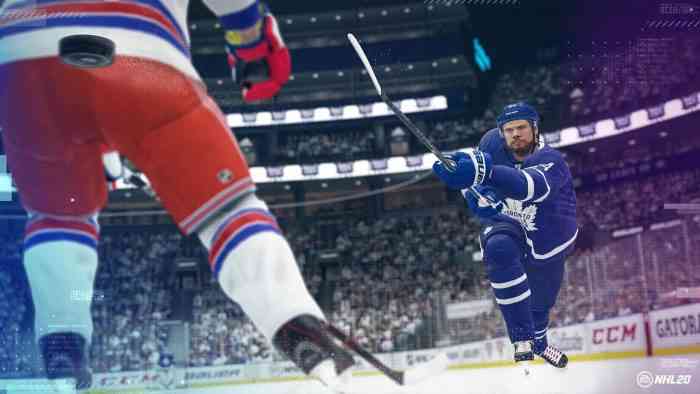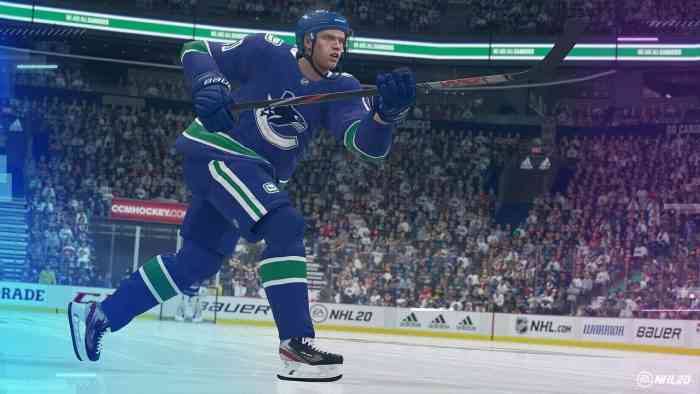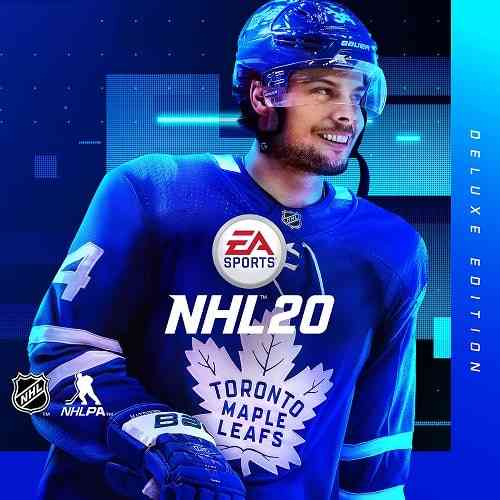Strap On Your Bucket For NHL 20
EA Vancouver has been working hard to begin to push the NHL franchise towards a proper simulation experience. Their effort has really paid off in this year’s iteration. The game is more fun than it’s ever been thanks in large part to RPM Tech truly changing the look and feel of the game in ways fans have wanted for years. There’s still a long road to travel in conveying the emotion of players and fans alike, and issues of years past still at times rear their ugly head, but NHL 20 has me more excited for video game hockey than I’ve been in a decade.
It doesn’t take long to start noticing the numerous changes that have been made to this year’s game. James Cybulski and Ray Ferraro do a fantastic job in the commentary booth, providing a level of realism we’ve never heard in the series. The emotion they’re able to convey often sounds just as good as the real commentators would. Another vast improvement is the offensive breakouts. Flying up the ice and moving the puck feels just as it should. With players now being able to pick up the puck without losing their stride, we no longer have to worry about catching the tail-end of a big check that otherwise would never have hit us. Many of those “eye-rolling” moments from previous years, where you felt as if the game was being unfair, are gone. If, say, I was struggling to break out of my zone, it only ever felt like it was my own doing.
Even more exciting, EA has made massive changes to the way your players, and AI players, shoot the puck. In arguably the most significant improvement in the entire game, all awkward looking shots have been eliminated. This year, regardless of where you’re taking your shot from or the speed at which you’re moving, your player will always take a proper looking shot. I can’t stress enough how much this changes things, especially battles in front of the net. Players will no longer awkwardly jam the puck at the net with the toe of their blade. Thanks to hundreds of new shootings animations, in over twenty hours of play, I haven’t once seen an unrealistic shot be taken. I can’t wait to get back out there and discover more of the new ways these players can get the puck on net. Down at the other end of the ice, goalies have also seen a massive improvement.

Better Than A Shooter Tutor
Thanks to goalies now being able to thoroughly analyze an offensive threat, they’re tougher to beat than ever. Goalies can now read more than just what’s going on with the puck. If you have a two-on-one situation brewing, the goaltender takes into account the second man and prepares himself better to deal with the attack. Goalies also will now steer the puck away from opponents to give their teammates a better chance at picking it up. Just like real life, it’s still very much possible to bounce a low shot off of a pad, or to send a pretty saucer pass cross-crease, and tap it in for an easy goal, but the frequency that this happens has been dramatically decreased. On top of this, goalies fight to trap the puck against their bodies, matching their real-life counterparts to a T. For the first time in years, I’ve actually been encouraged to learn new strategies and to play the game as if it was actual hockey.
Speaking of “actual hockey,” that term is perfect to now describe franchise mode. It’s the closest we’ve been to suiting up and running a squad for real. Thanks to a few fundamental changes, franchise mode is quickly turning into one of the finest that the NHL series has to offer. The two most significant improvements made are coaches and line chemistry. A team now has eight coaches in total: one head coach, two assistants, and a goalie coach, for both their NHL and AHL teams. Specific coaches specialize in certain parts of the game, and it’s up to the player to decide who to hire and fire to bring out the best in your team. The only thing missing from this are actual licensed coaches. Maybe one day we’ll see the likes of Mike Babcock and Joel Quenneville behind the bench, but not this year.

The new line chemistry addition completely changes the way you build your team. It’s now essential to find guys that match up with your coaches’ tactics and tendencies. Doing so gives your entire line a boost in both regular play and simulation. It’s addicting to tinker with lines and try to build a better team through trades, and free agency. Be sure to consider what type of coach you have before building lines, however, as they all work differently in regards to how much ice-time they give certain lines, for example. Once you’ve had your fill of franchise mode, you’ll have plenty of other fun to dig into, as I’ve been having an absolute blast with World of CHEL.
I’ll admit that in NHL 19 I didn’t pay much attention to World of CHEL. NHL 20 has made me a believer. I’m completely hooked on the loop of playing a few games, opening a couple of hockey bags, decking my player out with new gear, and repeating the process. It’s overwhelming at first when you realize just how much stuff there is to unlock – signed legends jerseys being my favorite, and I’m a big fan of how the ‘CHEL Challenges’ rotate weekly to give players the incentive to always come back for more. The challenges are fun too and haven’t yet at all felt grindy or frustrating. In the past week, I’ve had more fun playing World of CHEL’s ‘Ones,’ ‘Threes,’ and EASHL games with friends than I’ve had possibly ever before.

But, It’s Still An NHL Game
With all of the improvements to the on-ice product, it doesn’t take long to realize where the shortcomings of the franchise bleed through. These players still lack the emotion and intensity of their real-life selves. NHL 20 feels like the first chapter of an exciting, new, story for the game. By this I mean, for example, the new replay system is excellent – I love how they use the swinging camera shot to capture everything going on during goals, but then they’ll zoom in on the players celebrating, and they have about as much expression on their faces as a Sears mannequin. Then the camera will pan out to the crowd, and you see every one of them is utterly dead behind the eyes. These are the sorts of things now that are killing immersion, and this lack of emotion on players pops up far too frequently. Half the fun of watching hockey is laughing at the guys chirping each other. In NHL 20, I haven’t seen a single word uttered to someone in a post-whistle tussle.
On top of a lack of emotion coming from everything that isn’t the commentary team, I did find one particular exploit goal that players were using at will online, as well as a few audio bugs. An opponent of mine used the one-handed tuck, and scored the goal eight times in a row, with 100% accuracy. It’s the type of thing that completely ruins the experience and makes you want to shut the system off. I also found that players still lack spatial awareness a lot of the time. They bump into each other post-whistle frequently and slide off of each other with no reaction whatsoever. It’s another thing that snaps the player back out of the place EA is trying so hard to push us to.
Also of note, in my limited opportunities to play the game online, I experienced very little if any lag at all. We’ll see how servers hold up after release, but early latency impressions are very positive.
I’m excited about the future of the NHL series. Over the past five or six years, the series became incredibly stagnant, and desperately needed a shot of life to continue to hold players’ attention. NHL 20 is just what the doctor ordered. It’s more fun than I’ve had with the series in a very long time, and it’s plethora of modes, and unlockable gear will surely keep me busy until NHL 21. I hope to see a stronger emphasis on player and fan emotion down the line, but for now, NHL 20 has set a new bar.
**Xbox One review code provided by the publisher**
The Good
- Game Plays Better than Ever
- RPM Tech Works as Advertised
- New Broadcast Package
- World of Chel
- Franchise Mode Improvements
The Bad
- Game Still Lacks Emotion
- Exasperating Soundtrack
- Frequent Immersion Breaking Moments
- Exploit Goals Still a Problem

